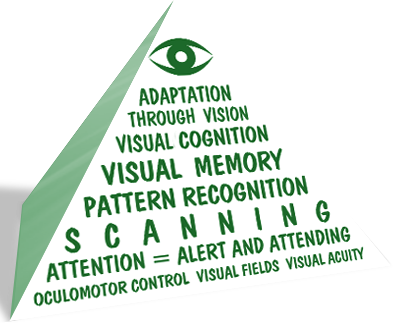Hemianopia is the most commonly occurring visual field impairment following acquired brain injury and the only neurological vision impairment to be classified as a low vision condition. Its presence significantly limits the client’s ability to complete daily occupations that require mobility, reading, and fine motor control. Most persons do not experience complete recovery of the affected visual field and must learn to live with this challenging condition.
This course takes a deep dive into this common visual condition with the intent of improving the depth of your understanding and expertise in working with this population. The lessons describe how hemianopia affects occupation; how to select and administer assessments to screen for its presence and distinguish it from neglect; how to document your findings and determine when to refer the client to the eye doctor for diagnosis and the best evidence-based interventions to improve occupational performance. You will receive 14 contact hours for completing the course.
Learning Objectives
- Correlate an observed change in visual field with a deficit in the corresponding anatomical structure or network within the brain.
- Describe the causes and characteristics of hemianopia and its accompanying deficits to understand how it affects occupational performance.
- Relate a client’s deficiency in visual field to their limitations in occupational performance.
- Accurately interpret field diagrams and relate the findings to the client’s occupational limitations.
- Select appropriate assessments to screen for the presence of a hemianopia and differentiate it from other co-occurring conditions like neglect.
- Understand how to align assessment and intervention with occupational therapy practice as delineated in the AOTA Occupational Therapy Practice Framework.
- Select appropriate assessments to evaluate the effect of hemianopia on performance skills that are needed to complete reading, writing, mobility, navigation and ADLs.
- Identify the correct procedures to administer assessments to identify the presence of hemianopia and its effect on occupational performance
- Use assessment results to select evidence-based interventions that enable the client with hemianopia to participate in daily occupations.
- Understand how to increase the visibility of environments and tasks to promote and support the client’s independence and participation in occupations.
- Use assessment results to select evidence-based interventions that enable the client with hemianopia to search the environment more efficiently to participate in daily occupations in home and community environments.
- Use assessment results to select evidence-based interventions that assist the client to safely and independently navigate familiar community environments.
- Identify the key abilities required to successfully resume driving and the best approach to assist the client to transition to driving retirement.
Everything you need is located on the first page of each lesson Including…
-
The link to the recorded power point lesson. This highlighted link is located below the description and learning objective(s). Click on the link to start listening to the lesson. The lesson is available to you 24/7 via the link but it cannot be downloaded.
-
Downloadable course materials. These include a note taking pdf handout of the powerpoint lesson in a 2 slide-per-page format and the supplemental handouts mentioned in the recorded lesson. A compiled pdf of the 30 lessons is available if you want to download all of the note taking handouts at one time. Click on the Materials tab on this main course page to locate this compiled handout and a pdf of the course references mentioned in the lessons.
-
A short multiple-choice quiz. The quiz is comprised of 2-5 multiple-choice questions to help you consolidate what you learned from the lesson. You must accurately answer each question on the quiz before you leave the lesson to obtain your course certificate.
- The course certificate will automatically be available to download as a pdf document when the last lesson quiz is successfully completed.
